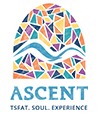Famous Sages and Kabbalists from the Golden Era of Tzfat
Mishnaic Times
Rabbi Shimon Bar Yochai
The presence of the burial site of the Mishnaic sage and author of the teachings of the Zohar, Rabbi Shimon Bar Yochai, in nearby Meron at the exact same altitude as Zefat is said to be a major factor in the original settlement of so many Kabbalists in Zefat. Read More
Yonatan Ben Uziel
Another great sage, from the Second Temple era, Yonatan Ben Uziel, whose tomb is one of Israel’s busiest pilgrimage sites, is buried in a beautiful valley just outside of Zefat. Read More
16th Century
Rabbi Yitzchak Luria
(1534-1572)
Known as “the Ari” (an acronym for “the G-dly Rabbi Yitzchak”; lit. “Lion”). Revolutionized the study of Kabbalah during the two years he spent in Zefat before his death at 38. Despite the brevity of his teaching career, his intricate and profound system spans at least ten large and terse volumes (written by his students) totaling thousands of pages. Read More
Rabbi Yosef Caro
(1488-1575)
Codifier and Kabbalist, student of Rabbis Yaakov Beirav and Shlomo Al-Kabets, chief rabbi of Tzfat from 1546. Author of several major works, including the Shulchan Aruch (“The Prepared Table”–Code of Jewish Law), a compendium of the laws of the Torah governing a Jew’s entire life: personal, social, family, business, and religious. Notwithstanding subsequent revisions, it remains the foremost authoritative work on Jewish law and practice and is universally accepted by Jews the world over. Read More
Rabbi Chaim Vital
(1543-1620)
Student of Rabbis Moshe Al-Sheich and Moshe Cordevero, but best known as the main disciple of Rabbi Yitzchak Luria and the authoritative redactor of his doctrines, as recorded in Etz Chaim (“Tree of Life”). Pri Etz Chaim (“Fruit of the Tree of Life”), andShmoneh Sha’arim (“Eight Gates”). Author of several books of his own as well. Read More
Rabbi Yosef Saragossi
(14xx-?)
First chief rabbi in Tsfat’s recorded history. Laid groundwork in 1490’s-early 1500’s for Zefat to subsequently become a major center of Torah scholarship. Sometimes known as “Tzadik HaLavan” because of a miracle that occurred in his name. Read More
Rabbi Yaakov Beirav
(1474-1546)
Talmudist, spice trader, chief rabbi of Zefat from 1536. In 1538 he tried to reinstitute semichah (the original “rabbinical ordination,” which had been transmitted in an unbroken chain from Moses until the 4th century, when it was discontinued due to persecutions at that time) in anticipation of the coming of Messiah. After receiving the first ordination, he ordained Rabbis Yosef Caro, Moshe of Trani, Yosef Sagis, and Moshe Cordevero, but due to opposition, the plan was never officially accepted.
Rabbi Moshe of Trani
(1501-1580)
Major student of R. Yaakov Beirav and member of his Beit Din (“rabbinical court”) along with R. Yosef Caro. Succeeded R. Yosef Caro as chief Rabbi of Zefat.
Rabbi Yosef Sagis
(?-1573)
Colleague of Rabbis Yosef Caro and Moshe of Trani. Founder of an association of G-d fearing men who, among other things, met every Friday afternoon to review the righteousness of their actions during that week.
Rabbi Shlomo Al-Kabets
(1508-1593)
Author of the famous liturgical poem “Lecha Dodi” (Come My Beloved”), sung by Jews worldwide to welcome the Shabbat. Author of many works. Read more
Rabbi Moshe Al-Sheich
(1508-1593)
Kabbalist, homilist, and jurist. Student of R. Yosef Caro and member of his Beit Din. Rabbi Yitzchak Luria refused to teach him, insisting that R. Al-Sheich’s soul had entered this world for homiletic exposition, not Kabbalah. Author of many works, including important analytical commentaries on Scriptures. Read More
Rabbi Moshe Kordevero
(1522-1570)
Known by the anacronym of his name: Ramak. Considered the head of the Zefat Kabbalists until his death shortly after the arrival of Rabbi Yitzchak Luria. Author of many major works of Kabbalah, including Pardes Rimonim (“Orchard of Pomegranates”), in which he systematized all kabbalistic knowledge that had been revealed until then. Read more
Rabbi Eliyahu of Vidas
(1518-1592)
Student of Rabbi Moshe Cordevero. Author of Reishit Chochma, an important ethical treatise based on the teachings of the Zohar.
Rabbi Elisha Gallico
(1526-1589) Student of Rabbi Yosef Caro and member of his Beit Din. Author of numerous Scriptural commentaries, which reveal influence of Rabbi Shlomo Al-kabets.
Rabbi Tovia HaLevi
(1536-1606)
Well-known scholar and author.
Rabbi Yisrael Najara
(1530-1600)
Kabbalist, poet, and musician. Author of the Shabbat hymn “Koh Ribon Olam” and many others.
Rabbi Elazar Azkiri
(1531-1600)
Kabbalist and homilist. Student of Rabbis Yitzchak Luria and Yosef Sagis. Author of many works, including the popular hymn “Yedid Nefesh” and Chareidim, a book liking the commandments to the parts of the body involved in their fulfillment.
Rabbi Moshe Galante
(1540-1614)
Chief Rabbi of Zefat after Rabbi Moshe of Trani.
Rabbi Shmuel Uceda
(1538-1602)
Student of Rabbis Yitschak Luria, Chaim Vital, and Elisha Gallico. Author of Midrash Shmuel, an important commentary on Pirkei Avot (“Wisdom of the Fathers”).
19th Century
Rabbi Avraham Dov of Avritch – the Bat Ayin
Rabbi Chaim of Chernowitz – the Be’er Mayim Chayim
Rabbi Chaim’s love of the Sabbath was so extraordinary that on the red-arrowed-marker pointing to his gravesite in Tsfat’s famous ancient cemetery… Read More
__________________________________________________________________________________________
20th Century
Rabbi Shlomo-Eliezer Alfandri – the Sabba Kadisha
Rabbi Shlomo-Eliezer Alfandari was born in Istanbul, Turkey, in 1820, into a well-known rabbinical family. His father Rabbi Yaakov was a great G-d fearing scholar, but he did not live a long time. Read more
